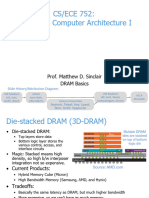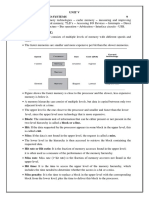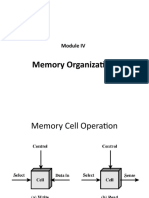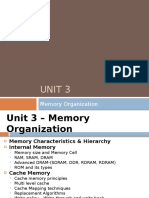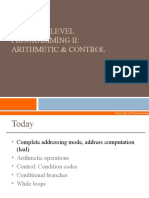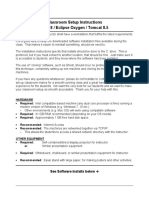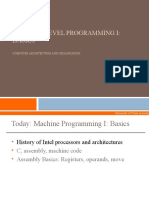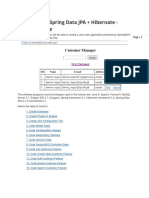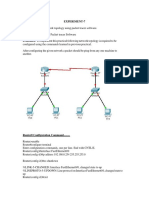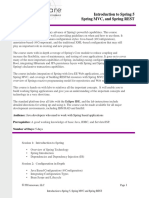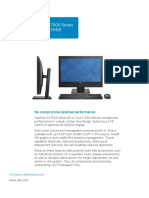0% found this document useful (0 votes)
187 views46 pagesThe Memory Hierarchy
The document discusses the memory hierarchy, including main memory (DRAM) and caching. It explains that DRAM is slower than CPU speeds, creating a memory bottleneck. Various techniques are used to enhance DRAM performance, such as synchronous DRAM (SDRAM) and double data rate synchronous DRAM (DDR SDRAM). Non-volatile memories like ROM, PROM, EEPROM and flash are also discussed. The document outlines how the traditional bus structure connects the CPU and memory and provides examples of memory read and write transactions. It briefly describes the components inside a disk drive including platters, tracks and sectors.
Uploaded by
darwinvargas2011Copyright
© © All Rights Reserved
We take content rights seriously. If you suspect this is your content, claim it here.
Available Formats
Download as PPTX, PDF, TXT or read online on Scribd
0% found this document useful (0 votes)
187 views46 pagesThe Memory Hierarchy
The document discusses the memory hierarchy, including main memory (DRAM) and caching. It explains that DRAM is slower than CPU speeds, creating a memory bottleneck. Various techniques are used to enhance DRAM performance, such as synchronous DRAM (SDRAM) and double data rate synchronous DRAM (DDR SDRAM). Non-volatile memories like ROM, PROM, EEPROM and flash are also discussed. The document outlines how the traditional bus structure connects the CPU and memory and provides examples of memory read and write transactions. It briefly describes the components inside a disk drive including platters, tracks and sectors.
Uploaded by
darwinvargas2011Copyright
© © All Rights Reserved
We take content rights seriously. If you suspect this is your content, claim it here.
Available Formats
Download as PPTX, PDF, TXT or read online on Scribd
/ 46























